Nobody could tell exactly when it began and nobody could predict when it would end. At the outset, they didn’t even call it a depression. At worst it was a recession, a brief slump, a “correction” in the market, a glitch in the rising curve of prosperity.
Only when the full import of those heartbreaking years sank in did it become the Great Depression – Great because there had been no other remotely like it.
In retrospect, we see it as a whole – as a neat decade tucked in between the Roaring Twenties and the Second World War, perhaps the most significant ten years in American history, a watershed era that perhaps scarred and transformed the nation.
But it hasn’t been easy for later generations to comprehend its devastating impact. The Great Depression lies just over the hill of memory; after all, it has been such a long time.
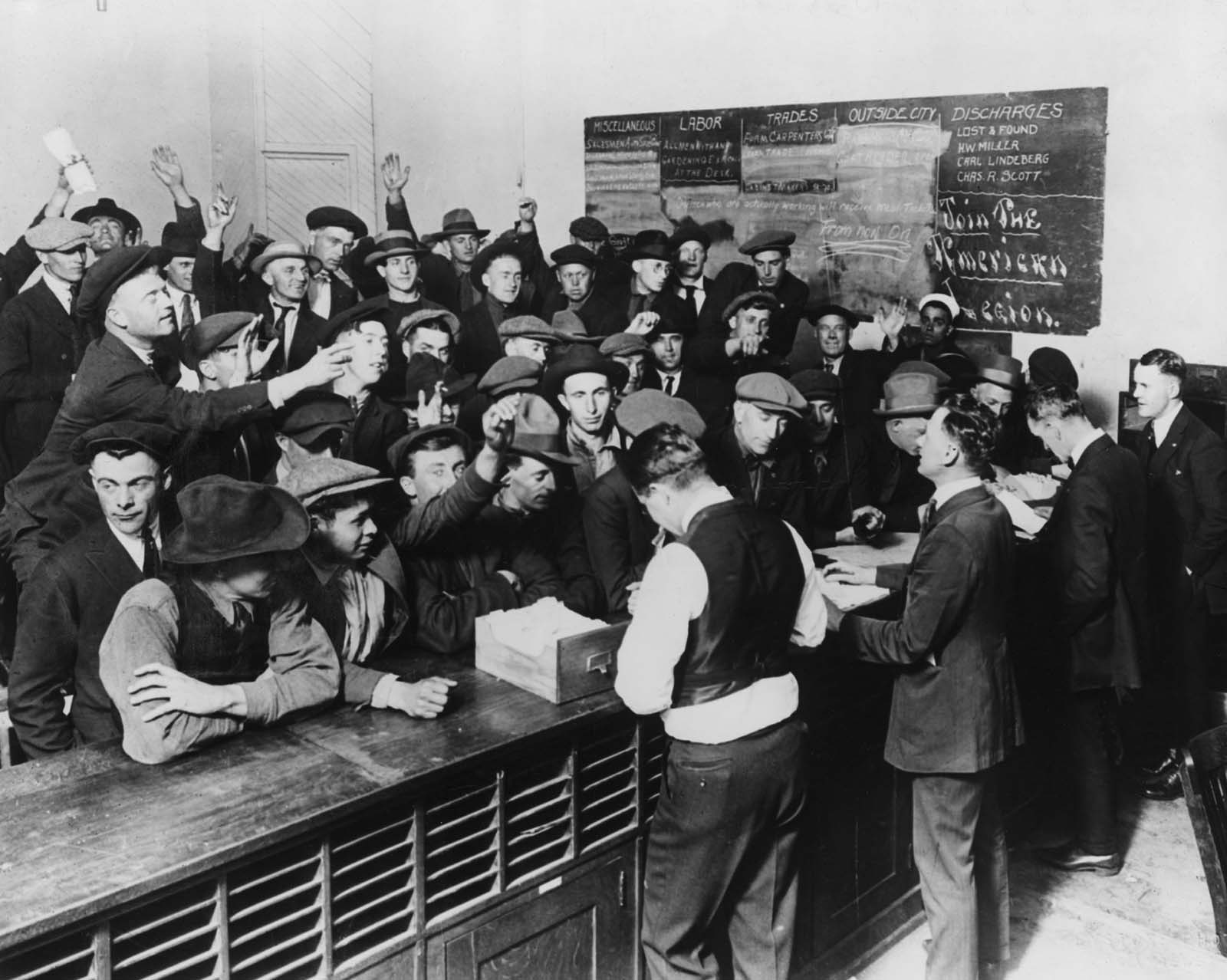
Crowd of men at Employment Office Desk.
The Great Depression began in August 1929, when the economic expansion of the Roaring Twenties came to an end. A series of financial crises punctuated the contraction. These crises included a stock market crash in 1929, a series of regional banking panics in 1930 and 1931, and a series of national and international financial crises from 1931 through 1933.
The downturn hit bottom in March 1933, when the commercial banking system collapsed and President Roosevelt declared a national banking holiday. Between 1929 and 1932, worldwide gross domestic product (GDP) fell by an estimated 15%. By comparison, worldwide GDP fell by less than 1% from 2008 to 2009 during the Great Recession.
Although the Great Depression was relatively mild in some countries, it was severe in others, particularly in the United States, where, at its nadir in 1933, 25 percent of all workers and 37 percent of all nonfarm workers were completely out of work.
Some people starved; many others lost their farms and homes. Homeless vagabonds sneaked aboard the freight trains that crossed the nation.
Dispossessed cotton farmers, the “Okies,” stuffed their possessions into dilapidated Model Ts and migrated to California in the false hope that the posters about plentiful jobs were true. By 1933, industrial production declined by 50 percent, international trade plunged 30 percent, and investment fell 98 percent.

A struggling family during the Great Depression.
Cities around the world were hit hard, especially those dependent on heavy industry. Construction was virtually halted in many countries. Farming communities and rural areas suffered as crop prices fell by about 60%. Facing plummeting demand with few alternative sources of jobs, areas dependent on primary sector industries such as mining and logging suffered the most.
Drought persisted in the agricultural heartland, businesses and families defaulted on record numbers of loans, and more than 5,000 banks had failed. Hundreds of thousands of Americans found themselves homeless, and began congregating in shanty towns – dubbed “Hoovervilles” – that began to appear across the country.
In most countries of the world, recovery from the Great Depression began in 1933. In the U.S., recovery began in early 1933, but the U.S. did not return to 1929 GNP for over a decade and still had an unemployment rate of about 15% in 1940, albeit down from the high of 25% in 1933.
There is no consensus among economists regarding the motive force for the U.S. economic expansion that continued through most of the Roosevelt years (and the 1937 recession that interrupted it).
The common view among most economists is that Roosevelt’s New Deal policies either caused or accelerated the recovery, although his policies were never aggressive enough to bring the economy completely out of recession.

An unemployed man lies down on the New York docks. 1935.
Some economists have also called attention to the positive effects from expectations of reflation and rising nominal interest rates that Roosevelt’s words and actions portended. It was the rollback of those same reflationary policies that led to the interruption of a recession beginning in late 1937.
One contributing policy that reversed reflation was the Banking Act of 1935, which effectively raised reserve requirements, causing a monetary contraction that helped to thwart the recovery. GDP returned to its upward trend in 1938.
The common view among economic historians is that the Great Depression ended with the advent of World War II. Many economists believe that government spending on the war caused or at least accelerated recovery from the Great Depression, though some consider that it did not play a very large role in the recovery, though it did help in reducing unemployment.
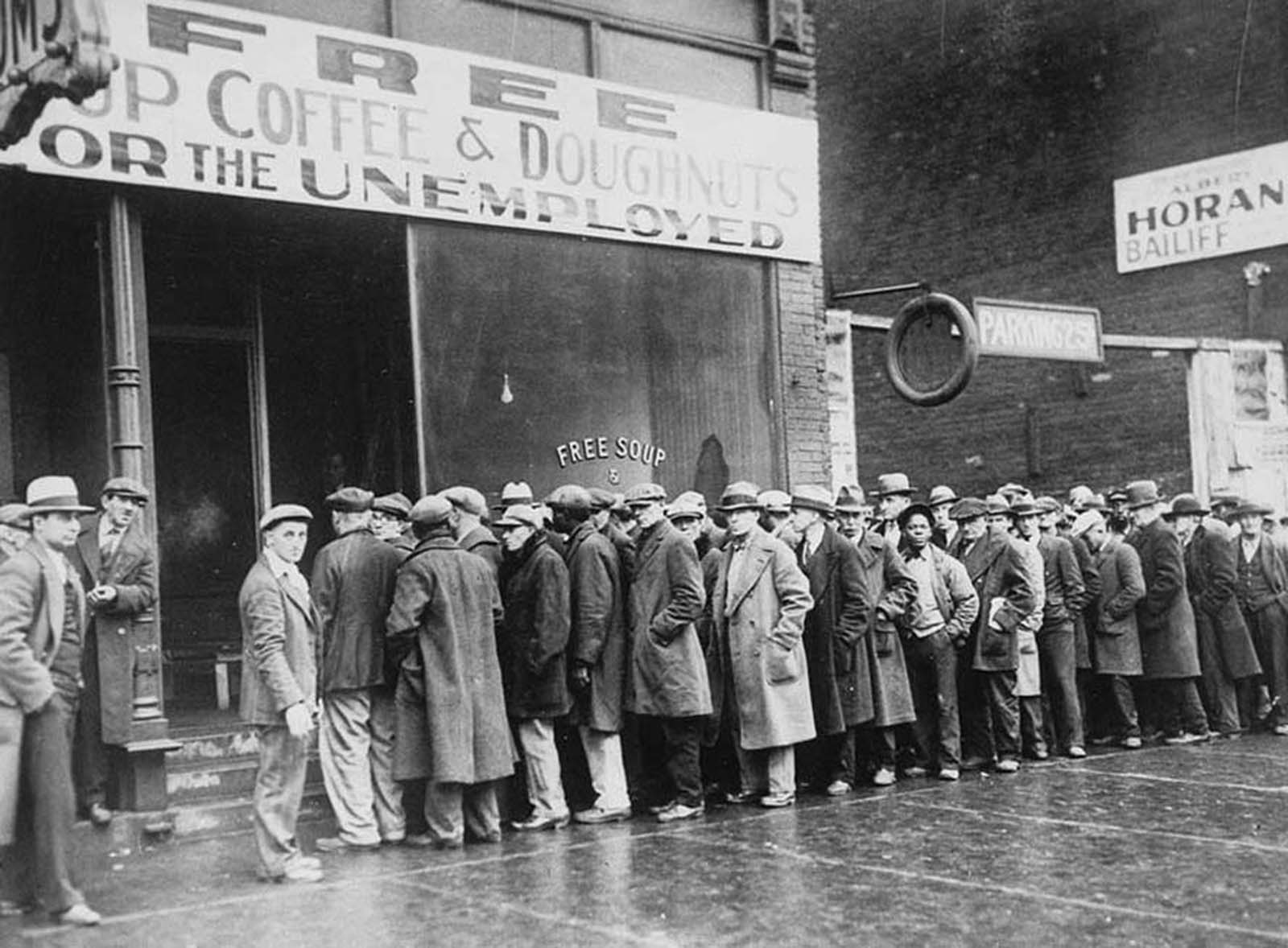
Unemployed men line up in front of a Chicago soup kitchen, which was operated by Al Capone.
The Great Depression transformed the American political and economic landscape. It produced a major political realignment, creating a coalition of big-city ethnics, African Americans, organized labor, and Southern Democrats committed, to varying degrees, to interventionist government.
It strengthened the federal presence in American life, spawning such innovations as national old-age pensions, unemployment compensation, aid to dependent children, public housing, federally-subsidized school lunches, insured bank depositions, the minimum wage, and stock market regulation.
It fundamentally altered labor relations, producing a revived labor movement and a national labor policy protective of collective bargaining. It transformed the farm economy by introducing federal price supports. Above all, it led Americans to view the federal government as an agency of action and reform and the ultimate protector of public well-being.
The memory of the Depression also shaped modern theories of economics and resulted in many changes in how the government dealt with economic downturns, such as the use of stimulus packages, Keynesian economics, and Social Security. It also shaped modern American literature, resulting in famous novels such as John Steinbeck’s The Grapes of Wrath and Of Mice and Men.

Arkansas cotton pickers. 1935.

Two young boys sit on the porch in Arkansas, 1935.

Public health nurses from the Child Welfare Service visit a shanty home for a checkup.

A poor mother stands with her two children in Oklahoma. 1936..

The family of an unemployed man sits around a wood stove in their empty home, 1937.
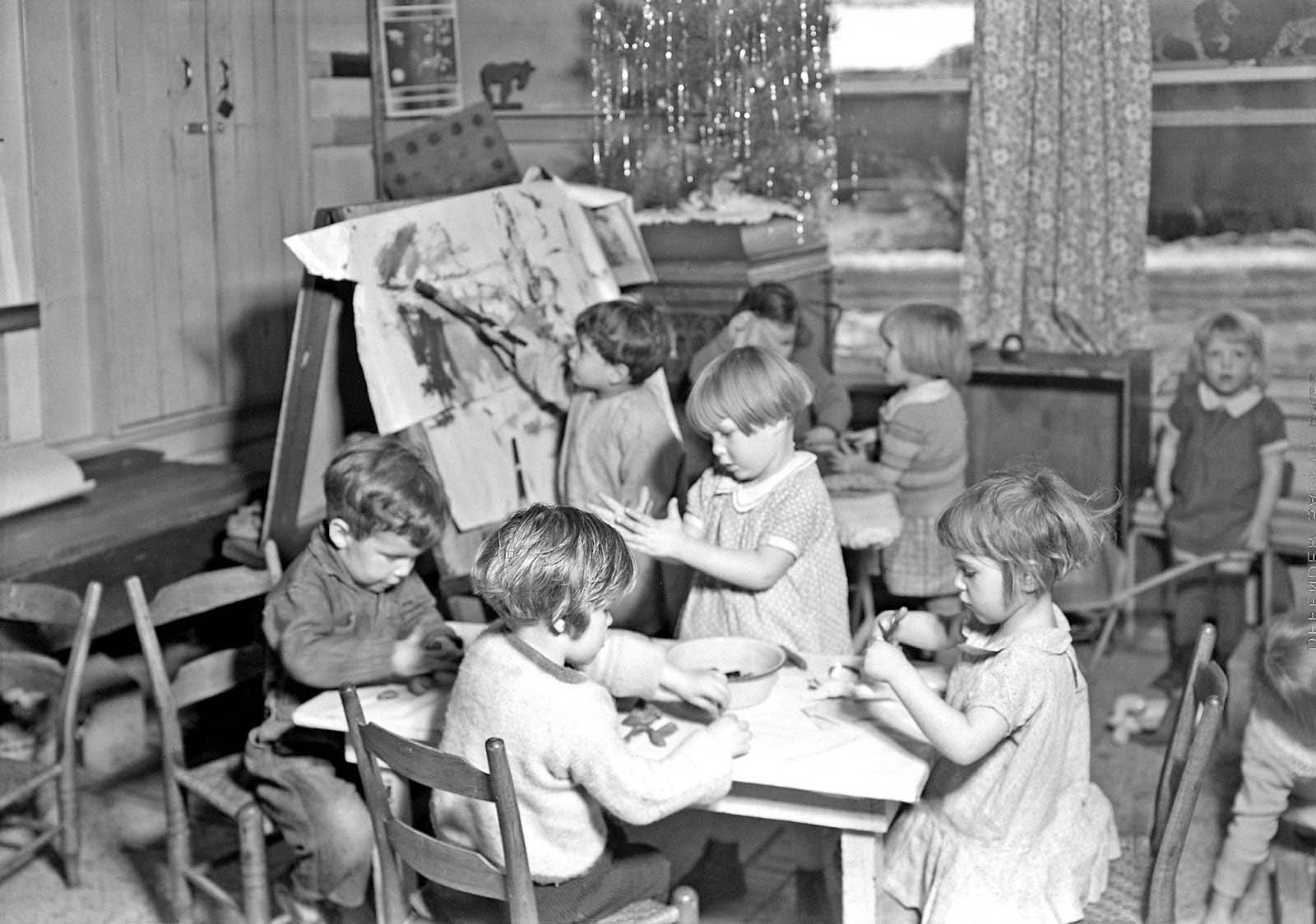
Children from the homes of unemployed miners gather together for nursery school in March of 1937 in Scott’s Run, West Virginia.
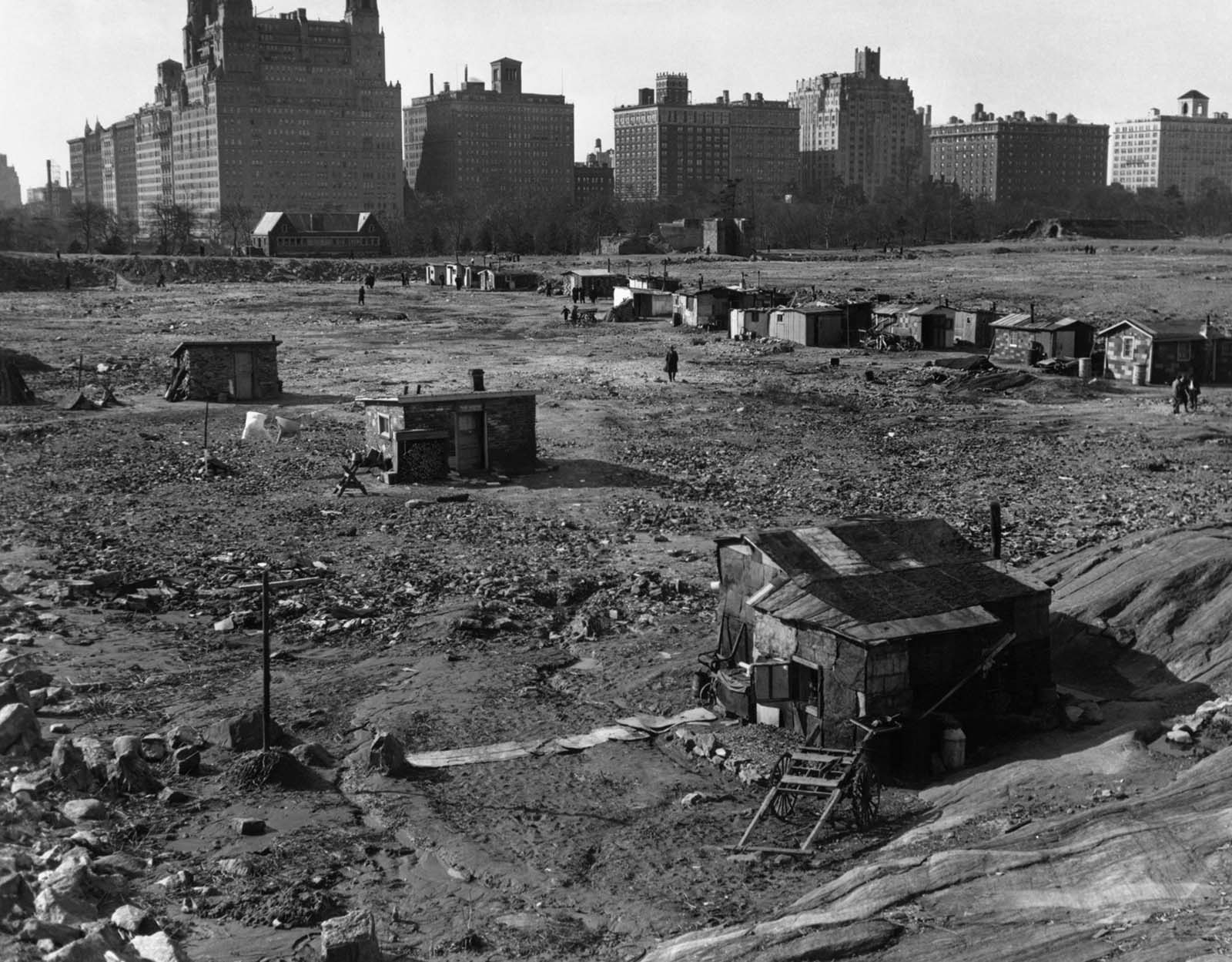
The Central Park of New York City became Hooverville, a shanty town for the newly impoverished (named for President Herbert Hoover, in office during the market crash and widely blamed for it). 1933.

An old woman receives her Thanksgiving ration of food as other hungry people wait in line. 1930s.

Unemployed men sit outside their makeshift homes in lower Manhattan, 1935.

A large group of New Yorkers waits on a food line, 1932.
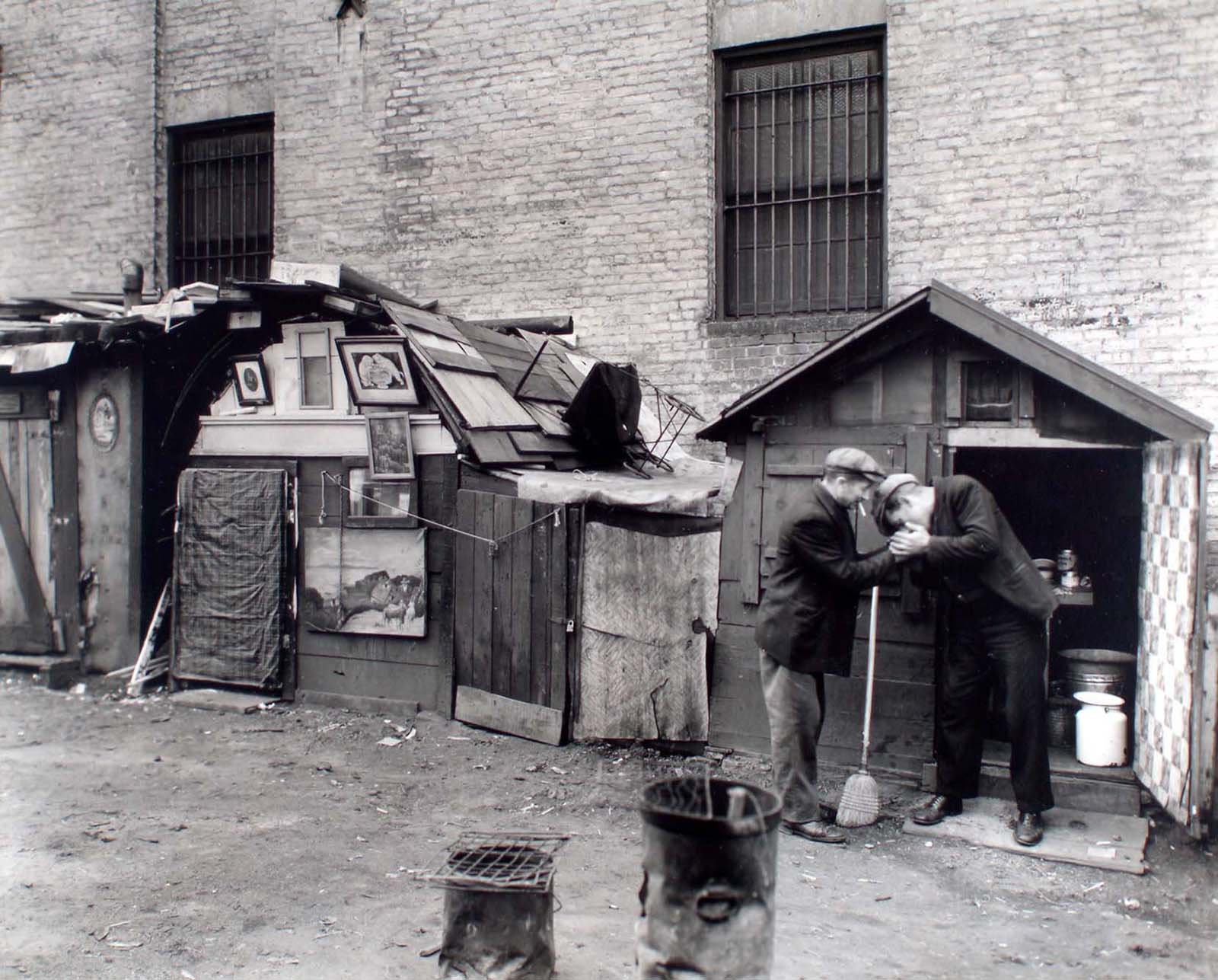
Unemployed men smoke cigarettes amid their shantytown in lower Manhattan, 1935.

Men wait on a breadline in New York, 1932.

Unemployed single women march to demand jobs, 1933.
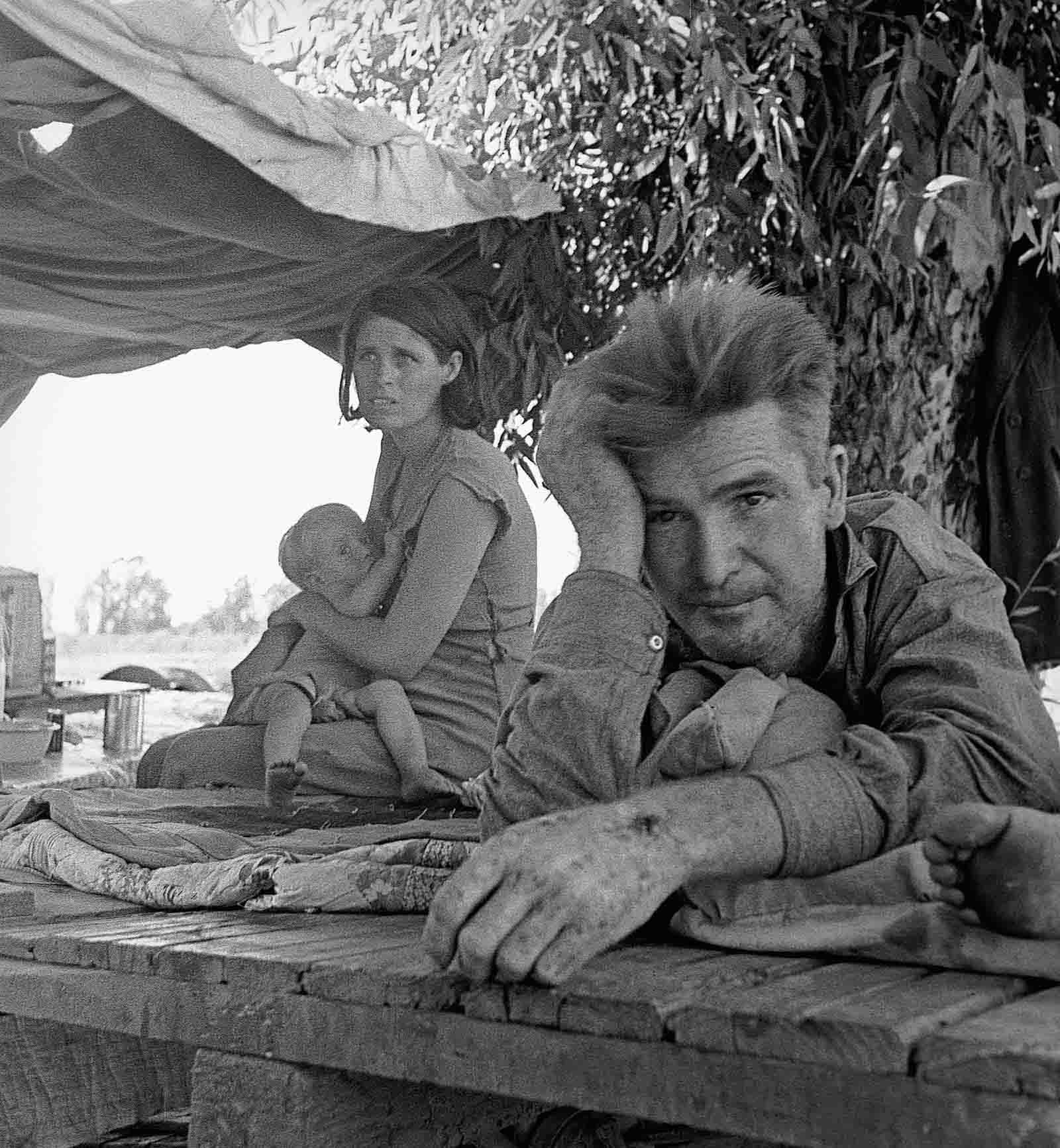
A family of migrant workers fleeing from the drought in Oklahoma camp by the roadside in Blythe, California, 1936.

An unemployed man during the Great Depression.
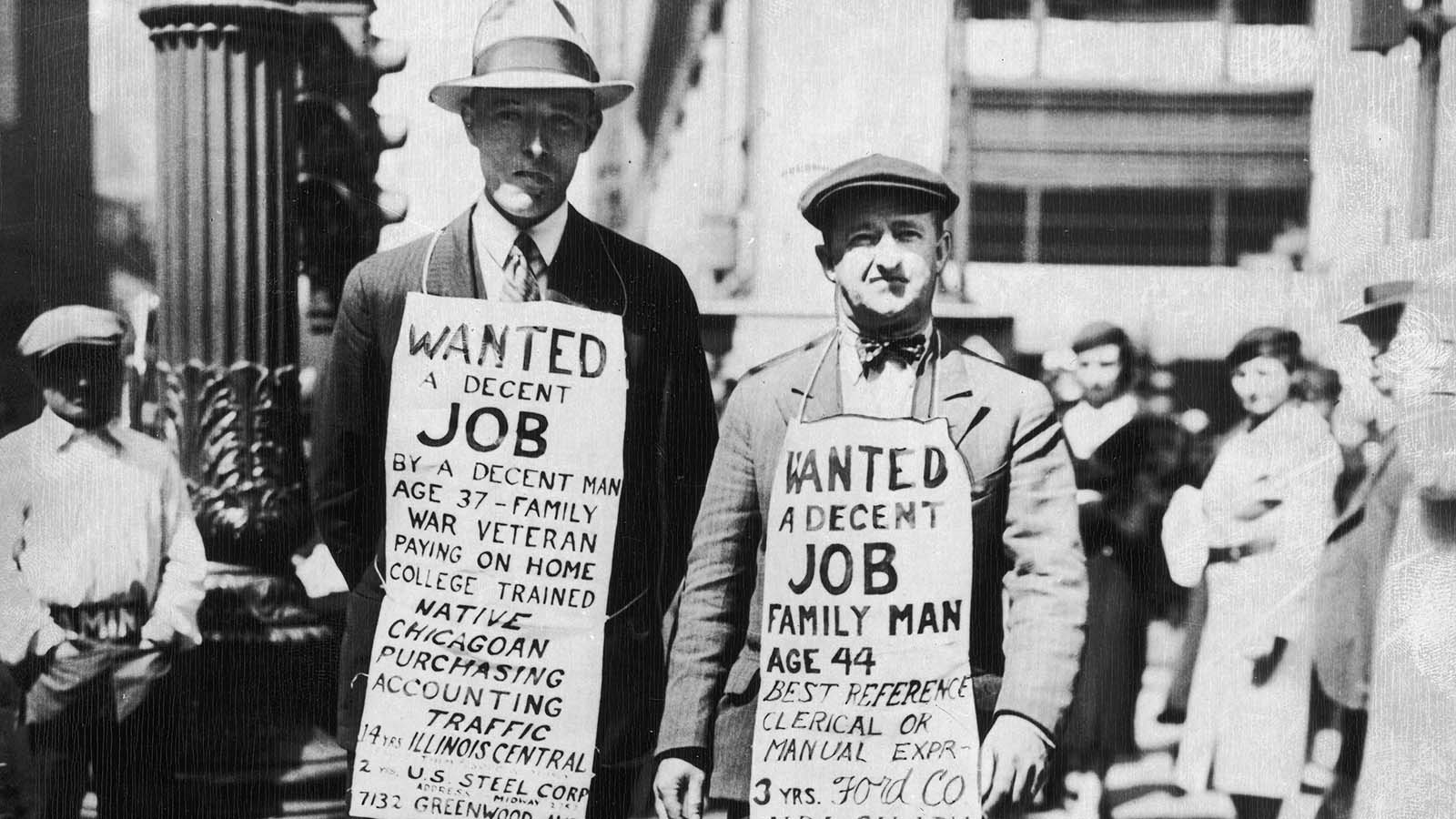
Men looking for work hold up signs. 1930s.
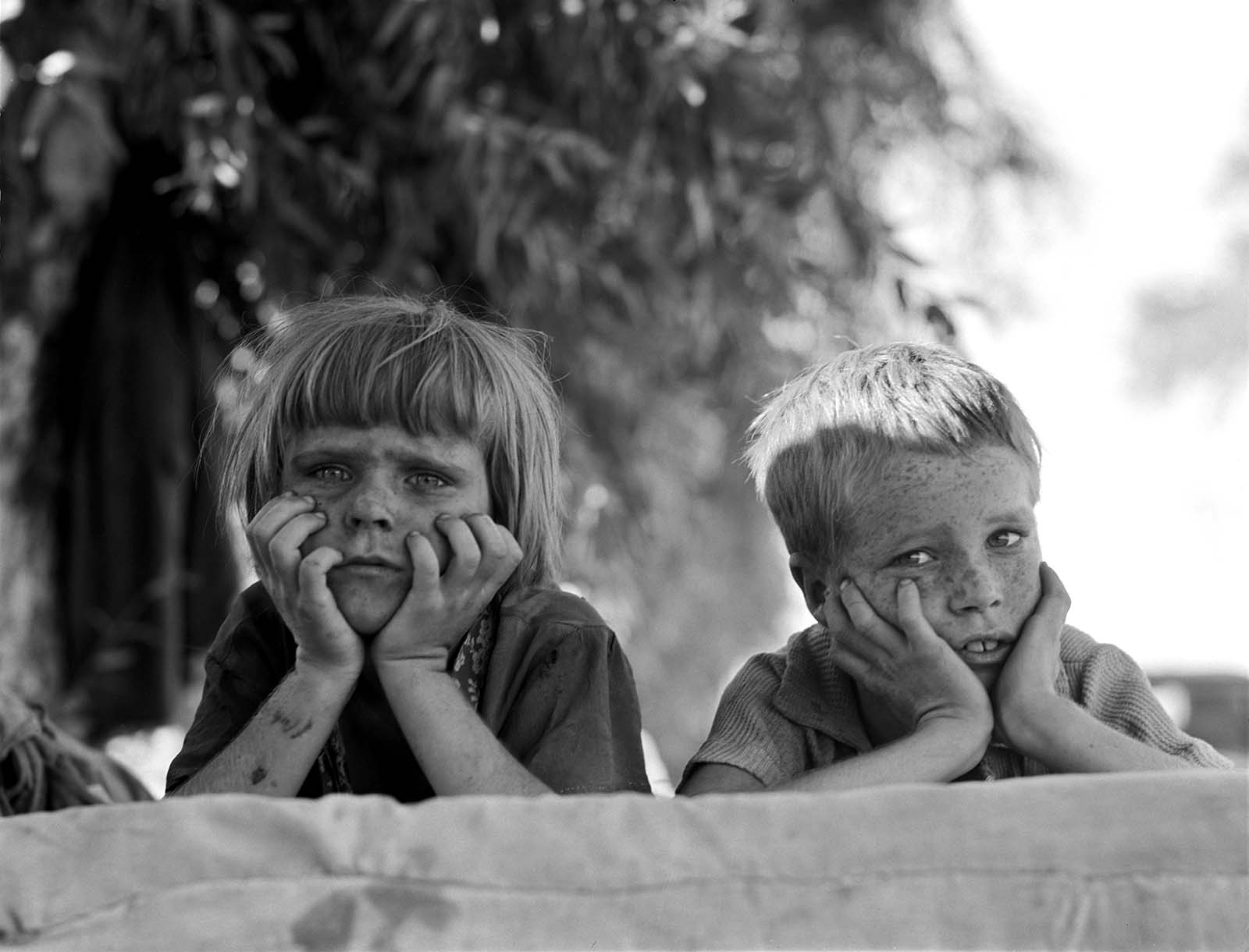
Children from Oklahoma staying in a migratory camp in California. 1936.

The children of a migrant family living in a trailer in the middle of a field south of Chandler, Arizona, 1940.
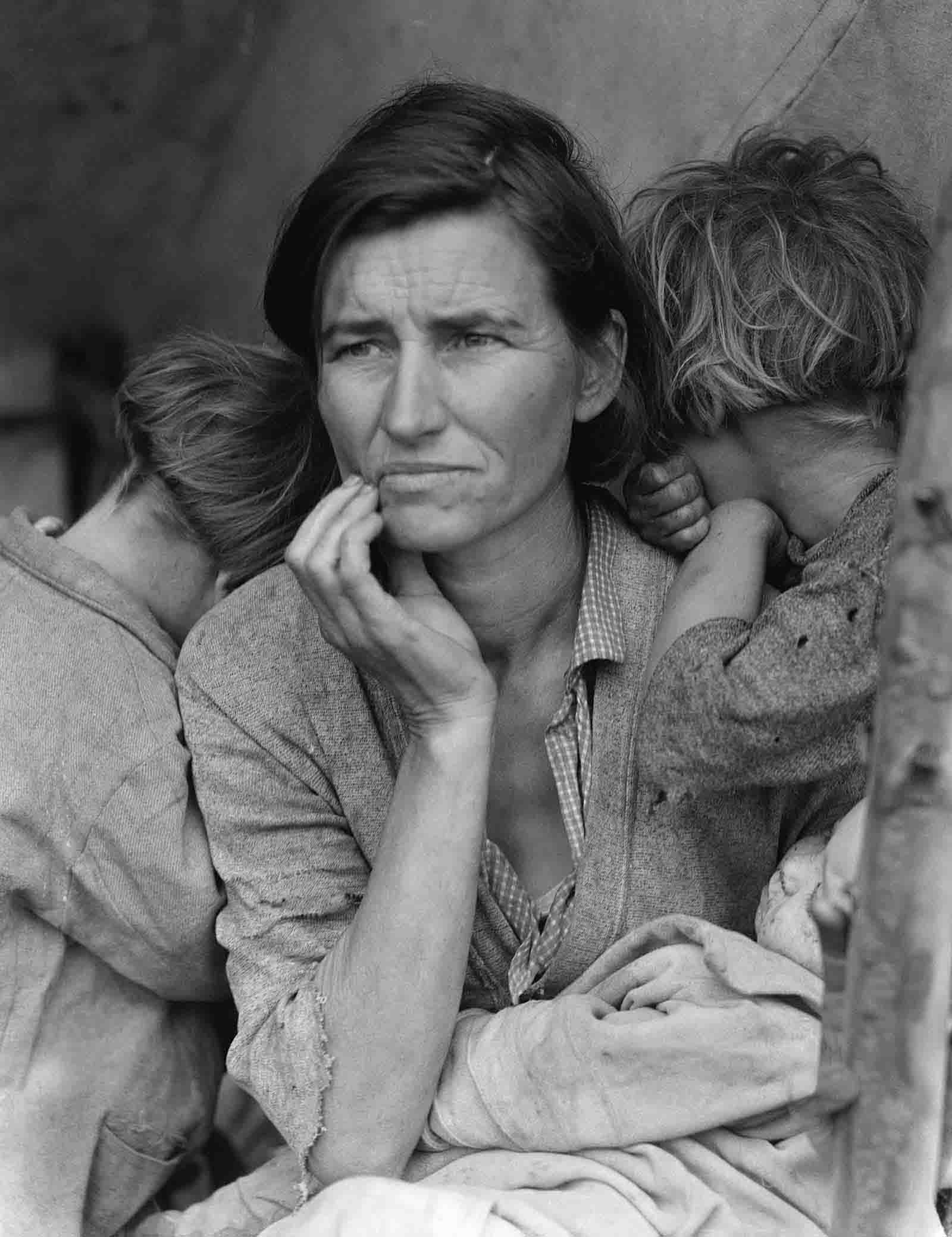
Thirty-two-year-old Florence Owens Thompson with three of her seven children at a pea pickers’ camp in Nipomo, California, 1936. The picture is famously known as “The Migrant Mother”.

Crowd gathering at the intersection of Wall Street and Broad Street after the 1929 crash.

Crowd at New York’s American Union Bank during a bank run early in the Great Depression.
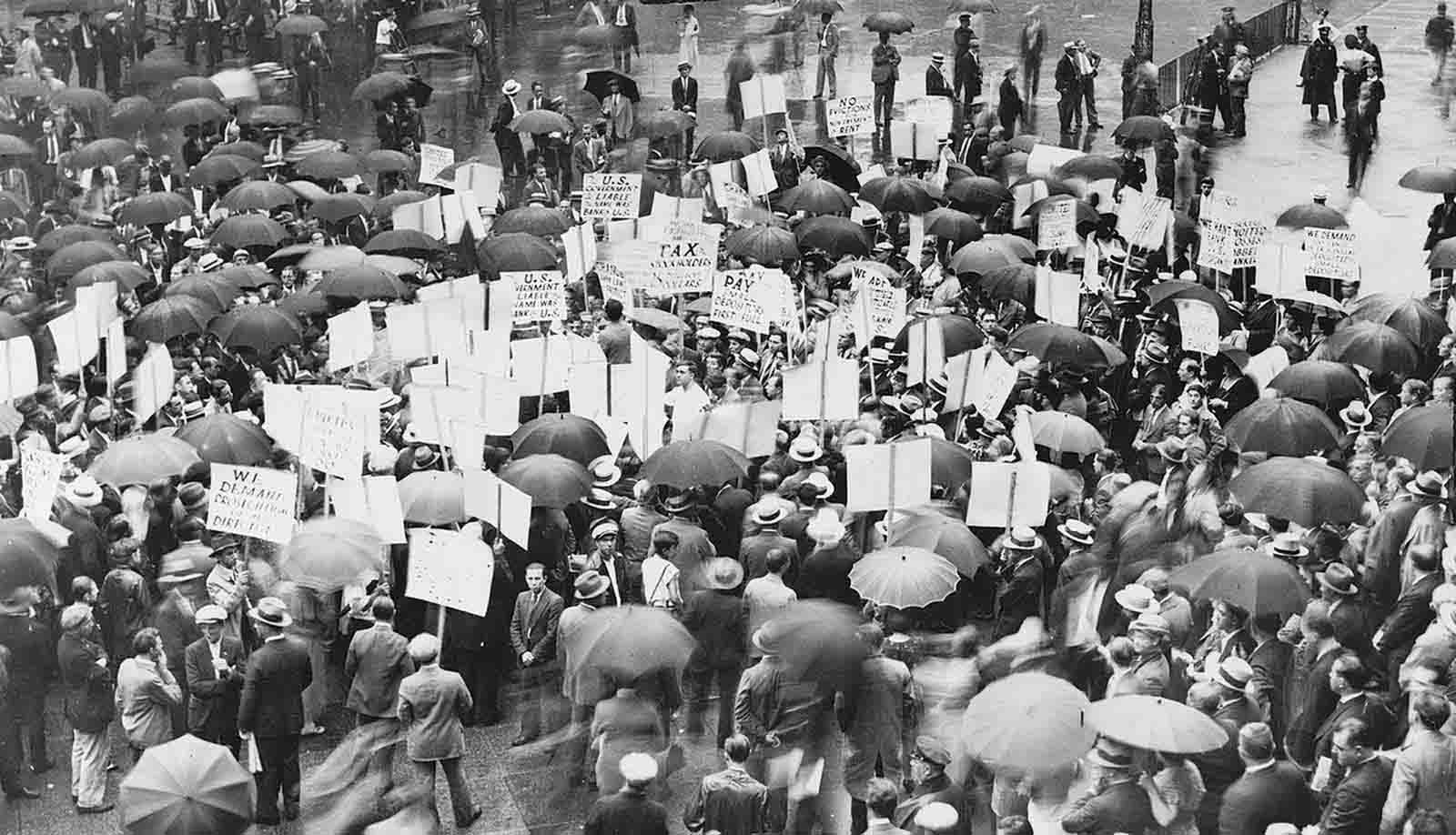
Crowds outside the Bank of United States in New York after its failure in 1931.

Buried machinery in a barn lot; South Dakota, May 1936. The Dust Bowl on the Great Plains coincided with the Great Depression.

Greek migratory woman living in a cotton camp near Exeter, California, ca. 1935.

Unemployed coal miner’s daughter carrying home can of kerosene. Company housing, Scotts Run, W. Va., 1938.

Farmer walking in dust storm. Cimarron County, Oklahoma circa 1936.

Government agent interviewing a prospective resettlement client in Garrett County, Maryland circa 1938.
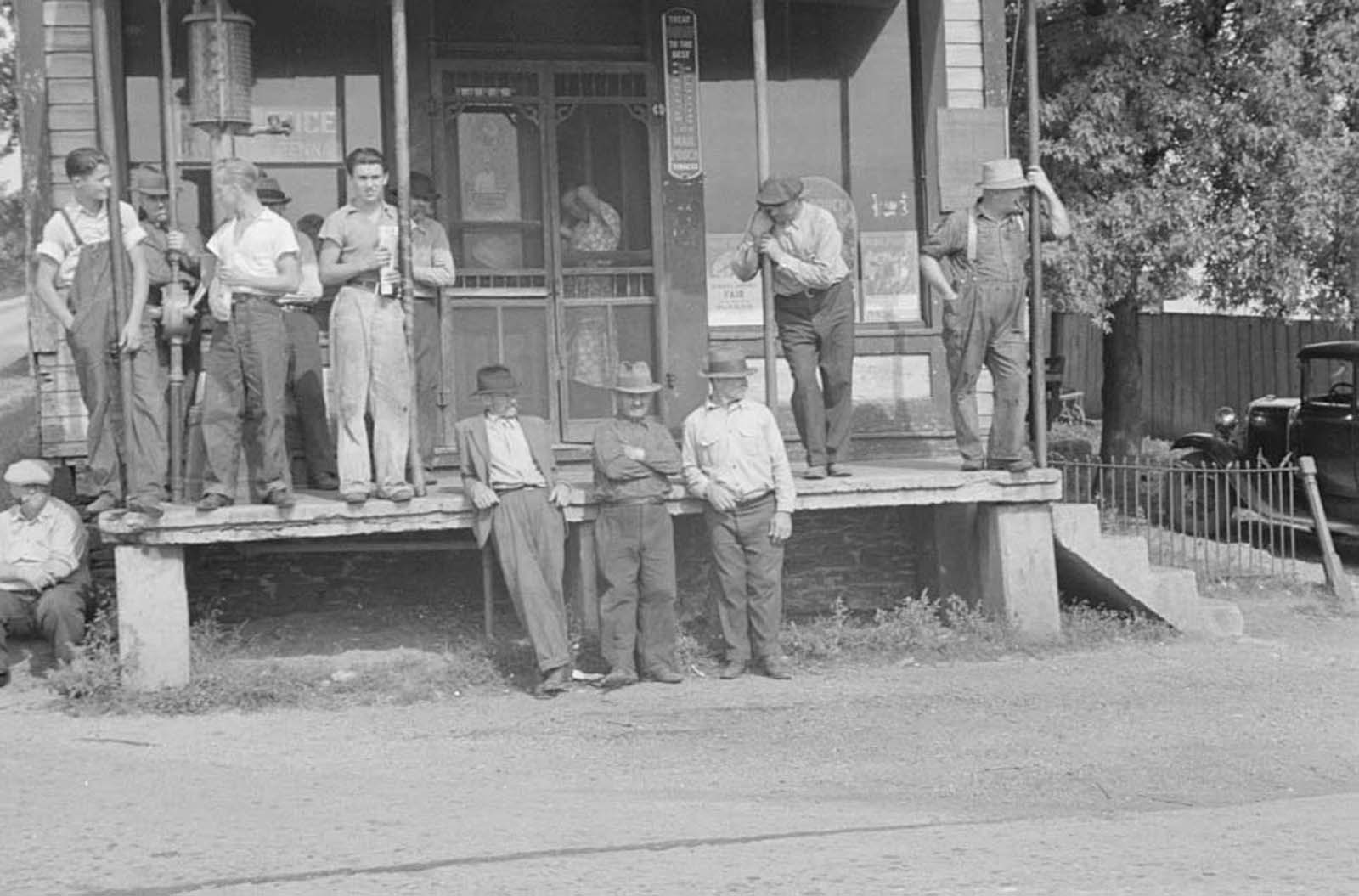
Prospective homesteaders in front of the post office at United, Westmoreland County, Pennsylvania. 1935.
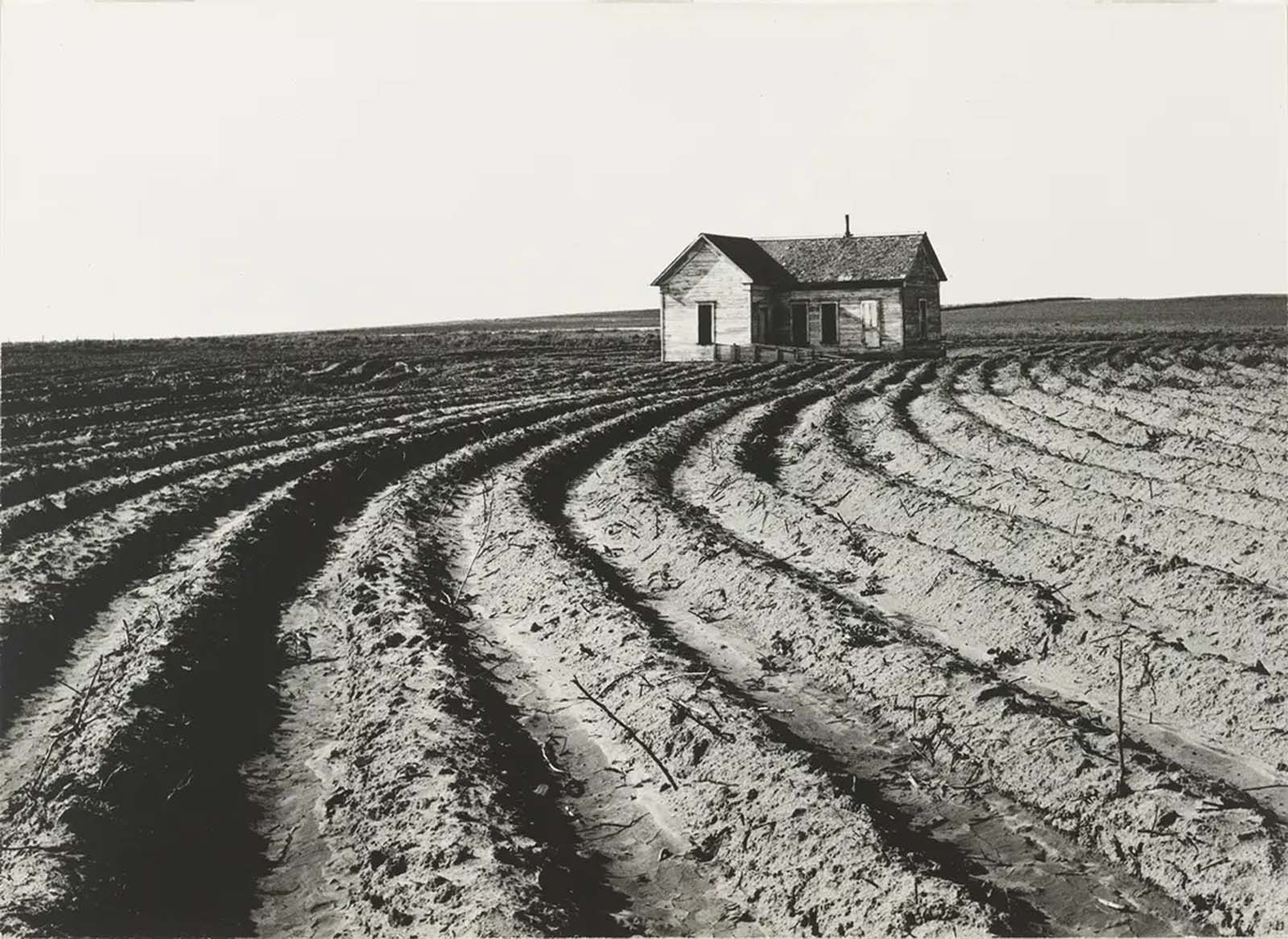
Power farming displaces tenants from the land in the western dry cotton area. Childress County, Texas, 1938.

Farm foreclosure sale. 1930s.

Toward Los Angeles, California.

Schoolchildren line up for the free issue of soup and a slice of bread during the Depression. 1934.

Unemployed workers sleeping in the bandstand at a park. 1938.
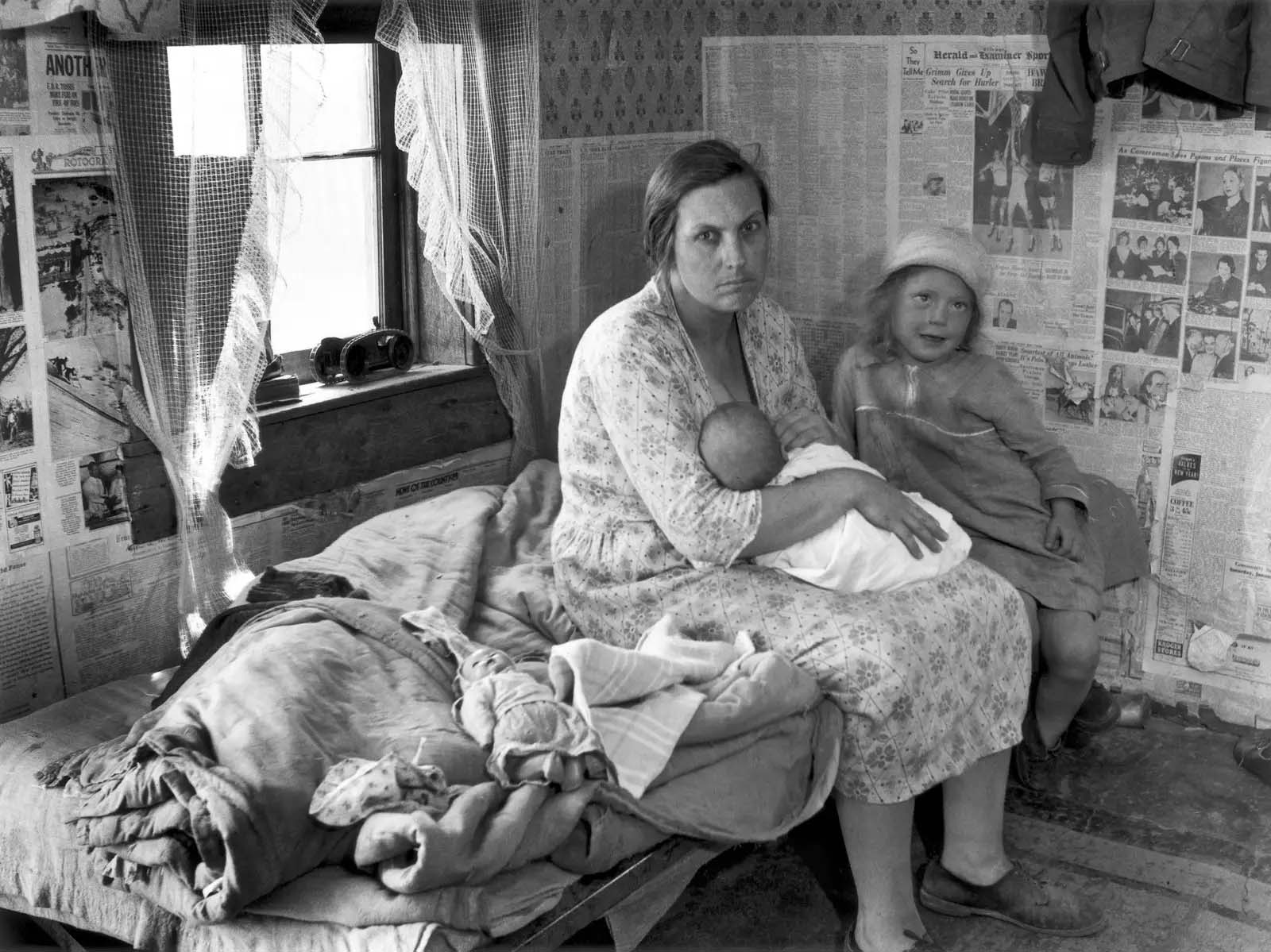
Interior of Ozark cabin housing six people,” Carl Mydans, Missouri, May 1936.

Lewis Hunter with his family, Lady’s Island, Beaufort,” Carl Mydans, South Carolina, June 1936.

Interior of a rural home, Greene County, Georgia.

Family of migrant packinghouse workers in their quarters, Homestead, Florida. 1939.

Tenant farmer moving his household goods to a new farm, Hamilton County, Tennessee. 1937.
(Photo credit: Library of Congress / Wikimedia Commons).




